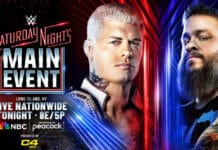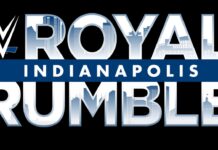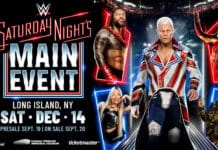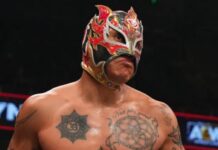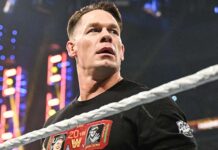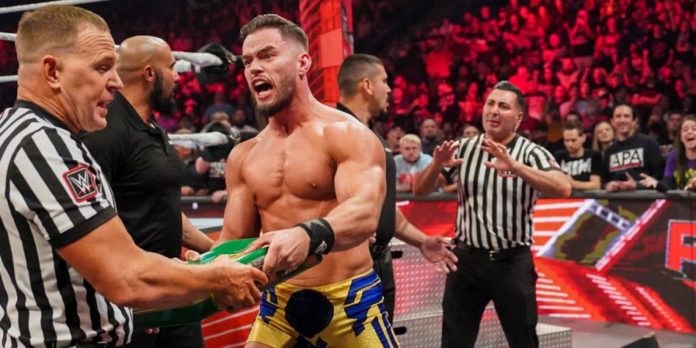
The biggest story of the year and arguably the biggest in the history of professional wrestling unfolded earlier this year when Vince McMahon, who bought the WWWF from his dad in 1983 before he took the company national, “retired” from the company after the Wall Street Journal reported millions of dollars of hush money payments were made in the previous 15 years to keep his affairs quiet. It goes without saying that McMahon is a major reason why the WWE is a publicly traded global corporation today. However, it was the same board of directors that was formed when the company went public, allowing him to become a billionaire, that ultimately hired a firm for the investigation that sent him into retirement.
The details of that story were discussed at length at the time, and I’m sure there will eventually be books written about the swift fall of the emperor of sports entertainment. As much as Vince’s influence on the business will always remain a part of the fabric of the industry, the shift in direction and philosophy might be nearly as impactful in retrospect. Of course, we know the old Vince tropes that he fell back on when the numbers were down or a somewhat narrow-minded view of what type of superstar could be a successful draw based on the patterns of the past. In some ways, in the post-WCW landscape, especially in the early-2000s, some of the McMahon tactics were recycled so often that they became punch lines if a segment was particularly subpar. I don’t think I’ve ever heard someone say they have tickets to the “sports entertainment matches,” but somehow the company with wrestling in its name was banned from using the word on its programs. The people in the audience that bought tickets to the “sports entertainment matches” weren’t fans, they were members of the “WWE universe” on television. Don’t get me wrong, I completely understand packaging the broadcasts as “sports entertainment” and for years in the late-90s, there was a reference to the term in the opening video packages of shows. Buying commercial time on sports entertainment programming sounds like a better investment to advertisers than “pro rasslin'” but at some point, it jumps the shark and becomes too pretentious. It got to the point where even the most diehard WWE fans were given the impression that the product was something that the office was trying to “dress up” for the shareholders. Keep in mind, wrestling is quite literally still on the marquee.
When Triple H took over the company, something that looked to be a done deal for years before NXT was repackaged in recent years and some thought it would be Nick Khan to take over, it looked like all the pieces of the previous puzzle were back in place. So, naturally, NXT was rebranded again and a slew of talent, many that were cut during the pandemic because the McMahon regime thought they were expendable, were brought back into the organization.
As I’ve written before, I don’t think the changes implemented by Triple H, now or in the future, are necessarily anything too earth-shattering on their own. The goal for the WWE is and will remain to draw the general public to the product. Remember, the WWE is the Walmart of pro wrestling, it’s easily accessible and relatively cheap, especially when you considered that pay-per-views, broadcasts that used to be the biggest revenue stream for the company, are either $4.99 or in some cases free with a cable package. The goal is to get the causal fans to tune into the show, which became even more of a priority when the company landed the major television deals. That being said, the sum of the small changes can allow for a more organic presentation. The fact that the word wrestling can be said on a wrestling show didn’t tank the stock price.
For the past several years, McMahon relied on nostalgia to boost events rather than taking any risk to build around younger talent. Sure, it allowed for nostalgic runs for guys like Sting, Goldberg, and others, but the downside of that strategy is that by nature, it has a limited draw. We all know what can happen when the office tries to play those cards too many times on key events. Aside from the quality being hit or miss, you can only rely on so many aging legends for so long until there simply isn’t anyone else to bring back from a prior top-tier level. This was made very clear when Steve Austin was brought out of retirement to sell tickets to a stadium show at Wrestlemania this year.
Outside of Roman Reigns, Brock Lesnar, and Ronda Rousey, the rest of the roster was kept at a secondary level. The McMahon philosophy didn’t create anyone else to truly move the needle, and the argument could be made that John Cena is still the last legitimate money-drawing star the company made over 15 years ago. Make no mistake, Roman is a star and he’s doing the best work of his career as a heel. But, at the same time, you wouldn’t put Roman on the same level as some of the other top guys from the eras preceded him. It’s beyond his control but as far as main stream popularity, he’s not on the same level as The Rock, Stone Cold, or John Cena because the business itself isn’t as popular with the main stream audience. However, Roman is one of those top-tier talents that could’ve been a star in any era. He’s just a big fish in a small pond because the brand is usually promoted ahead of individual stars. As I’ve written in the past, there are positives and negatives to that but at this point there must be a definitive shift towards the future.
What other star from the 90s can they bring back to boost Wrestlemania? Some might say that booking Steve Austin in the main event of night one of Wrestlemania this year was the final nostalgia card that they could play to substitute for a lack of star power of the current roster.
Only time will tell if the Triple H philosophy builds those stars that can draw in the future, but after Raw this past week, it seems clear that he didn’t buy into a prior Vince McMahon project, the push of Austin Theory. I wrote a few weeks ago that while Theory is decent enough, there wasn’t anything that made me think he was potentially the next top guy. Instead, I’d guess that’s the future for someone like Bron Breakker. Still, Theory won the MITB contract, and the office had to do something with it. The pay off of a successful cash-in can propel a competitor to the next level, but a failed attempt implies the opposite for their career trajectory. After Seth Rollins was beat down, Theory attempted to cash-in for the US title, which is rather odd because the world title is promoted as the top championship in the company. Rollins kicked out of Theory’s signature moves and then beat him to retain the title. Rollins was beat down by Bobby Lashley, but still defeated Theory, which leaves him completely flat.
At this point, keeping him off of television for a few months and scripting him to show up in NXT might be the only way to avoid him getting labeled as a total flop. As mentioned, the overall goal of the WWE product will remain the same, but how to get there and thus how effective it will be are different under the Triple H regime. Proof of that is that Vince’s project was made to look like anything but a future star this past week on Raw. It remains to be seen how effective the Triple H philosophy will be on a long term basis, but he’s definitely not using the McMahon playbook for the company.
What do you think? Share your thoughts, opinions, feedback, and anything else that was raised on Twitter @PWMania and Facebook.com/PWMania.
Until next week
-Jim LaMotta
E mail [email protected] | You can follow me on Twitter @jimlamotta

